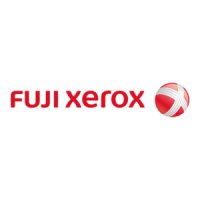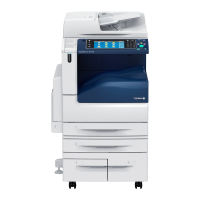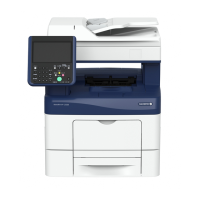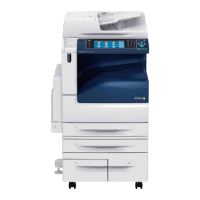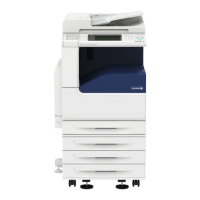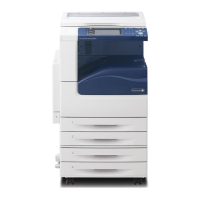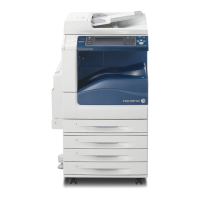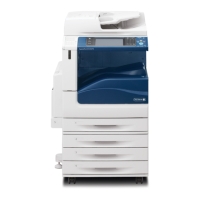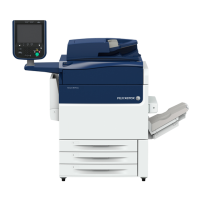
Do you have a question about the Fuji Xerox Color C60 and is the answer not in the manual?
| Print Speed (Black) | 60 ppm |
|---|---|
| Print Speed (Color) | 60 ppm |
| Print Resolution | 1200 x 2400 dpi |
| Copy Speed (Black) | 60 cpm |
| Copy Speed (Color) | 60 cpm |
| Copy Resolution | 600 x 600 dpi |
| Scan Resolution | 600 x 600 dpi |
| Monthly Duty Cycle | Up to 300, 000 pages |
| Duplex Printing | Automatic |
| Connectivity | USB, Ethernet, Wi-Fi |
| Operating System Compatibility | Windows, macOS, Linux |
| Type | All-in-One Printer |
| Supported Media Sizes | A4, A5, B5, Letter, Legal |
| Display | Touchscreen |
Introduction to the user guide and machine operation.
Details the accompanying manuals provided with the machine.
Explains how to use the guide and its structure.
Details terms, symbols, and formatting used in the guide.
Provides information about software licenses used in the product.
Lists additional software licenses relevant to the product.
Warns about illegal copying or printing of certain documents.
Identifies and describes the main parts and optional units of the machine.
Explains the main power switch and power switch operations.
Describes the function of the ground fault interrupter for safety.
Details the Low Power mode and Sleep mode for power saving.
Describes the names and functions of all components on the control panel.
Explains how to customize screens and assign services to custom buttons.
Describes fields, buttons, and services available on the Services Home screen.
Explains how to switch pages and scroll lists using touch screen operations.
Describes how to enter characters, numerals, alphabets, and symbols on the screen.
Details the basic steps for loading documents and initiating a copy job.
Covers operations like stopping, changing quantity, and interrupting a copy job.
Explains how to use basic features for easy document copying on a single screen.
Details how to make detailed settings for copy documents using the Copy screen.
Describes features for selecting document type and adjusting image quality settings.
Explains features for adjusting document layout for copies, like 2-sided copying and edge erase.
Details features for selecting output format, including booklet creation and poster printing.
Explains how to process documents scanned with different settings as one job.
Details the basic procedure for scanning documents, including loading and saving.
Covers operations during scanning, such as stopping, previewing, and changing settings.
Explains how to scan a document and send it as an e-mail attachment.
Describes how to scan documents using job templates and send to a server.
Details scanning documents and sending data to a network computer via FTP or SMB.
Explains how to scan documents and save them in a folder on the machine.
Describes how to scan documents and save them to a USB memory device.
Explains how to save scanned data temporarily and notify the user via e-mail with retrieval URLs.
Covers scanning documents and saving data to a network computer via Web Services on Devices.
Describes features for adjusting scan settings like color, resolution, and image options.
Details features for adjusting scan layout, including resolution, 2-sided scanning, and original size.
Explains settings for image compression, file format, and naming conventions for scanned files.
Describes how to store print files and scan files in folders, and retrieve them.
Explains how to select folders, potentially restricted by authentication settings.
Covers how to check, operate, and select files stored within a folder.
Explains how to preview selected files and check their details.
Details how to select and print files stored in a folder, including batch printing.
Describes how to register transfer settings for scan data to simplify tasks.
Details the procedure for scanning documents using a registered job flow sheet.
Explains how to select or edit a job flow sheet created on a network computer.
Introduces the service for storing and recalling frequently used settings or procedures.
Describes how to register, delete, and rename stored programs and their icons.
Explains how to recall a stored program to execute its registered operations.
Details how to call a stored program specifically for Build Job operations.
Provides an overview of accessing web applications via the network using the machine's browser.
Explains how to access web applications by registering and selecting an access destination.
Describes how to access registered web applications via shortcut buttons on the Services Home screen.
Introduces printing data from USB memory devices or scanned data from Store to USB.
Details the procedure for inserting a USB memory device into the control panel slot.
Explains how to select files and printing options for text documents.
Details how to select files and printing options for photographic images.
Describes how to set various printing options for Media Print.
Explains how to check current, pending, and completed jobs, and cancel them.
Describes how to check and manage current or pending jobs, including cancellation.
Explains how to check completed jobs and view their details.
Temporarily stores print data with a passcode for confidential documents.
Enables printing one set for trial before printing remaining sets.
Allows storing print data to print at a specified time.
Authenticates users and allows temporary job storage.
Stores print data per user ID for selective printing.
Describes how to forcibly print pending jobs or resume paused jobs.
Explains how to handle error terminations for print and scan jobs.
Provides an overview of features performable from a computer, like printing and e-mail.
Describes how to print documents from a computer using a print driver.
Explains how to send e-mails with attached documents for automatic printing by the machine.
Details methods to import files from the machine's folders to a computer.
Describes viewing machine status, changing settings, and importing files via a web browser.
Contains a glossary of terms used throughout the guide.
